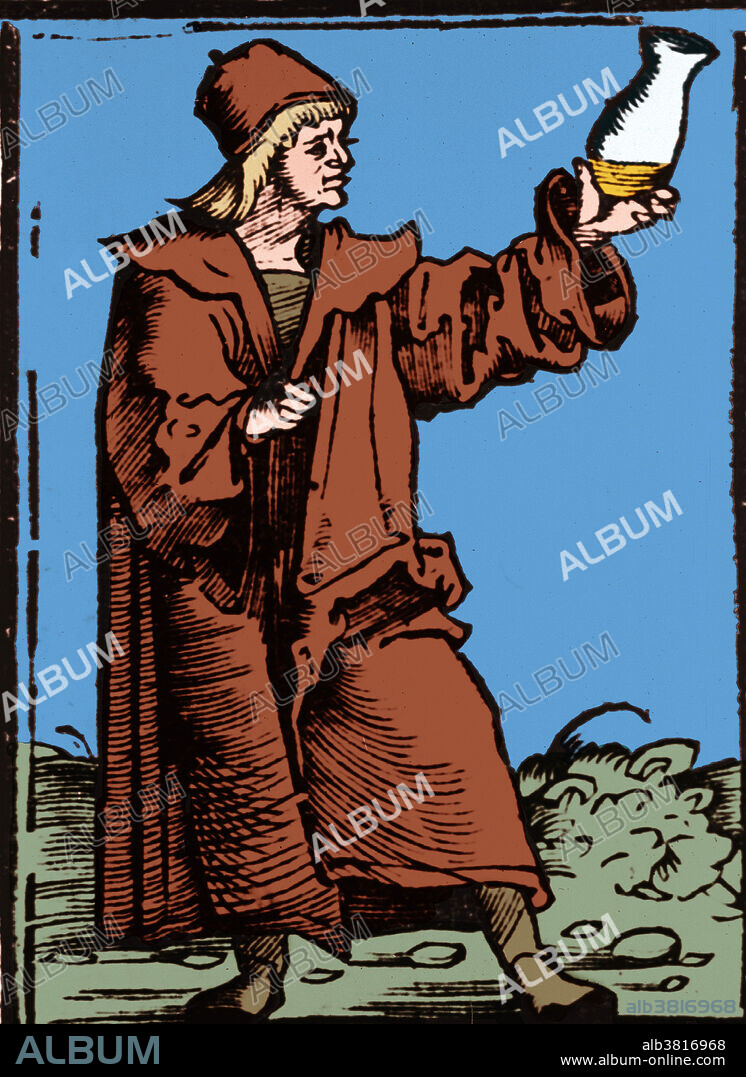alb3816968
Uroscopy, 1519

|
Añadir a otro lightbox |
|
Añadir a otro lightbox |



¿Ya tienes cuenta? Iniciar sesión
¿No tienes cuenta? Regístrate
Compra esta imagen.
Selecciona el uso:

Título:
Uroscopy, 1519
Descripción:
Ver traducción automática
Doctor examining a glass vessel containing a sample of a patient's urine. In medieval medicine, uroscopy was an important diagnostic tool, urine having 29 attributes to be observed. From this the physician deduced the supposed levels of a patient's four 'humours' (bodily fluids): blood, yellow bile, black bile and phlegm. Illness was thought to be due to an imbalance in these fluids. It was thought that the imbalance could be redressed by changing the patient's diet, prescribing medicine, by bleeding the patient, or by surgery. Image drawn by Lorenz Fries of Colmar, Germany, in 1519.
Crédito:
Album / NLM/Science Source
Autorizaciones:
Tamaño imagen:
2700 x 3708 px | 28.6 MB
Tamaño impresión:
22.9 x 31.4 cm | 9.0 x 12.4 in (300 dpi)
Palabras clave:
1519 • ANALISIS • ANORMAL • ARTE • COLOREADA • DIBUJO • DOCTOR • ENFERMEDAD • GENTE • GRABADO EN MADERA • HISTORIA • HISTORICO • HOMBRE • ILUSTRACION • ILUSTRACIONES • INFECCION • INFECTADOS • MASCULINO • MEDIA • MEDICINA • MEDICINAL • MEDICO • MEDIEVAL • MEJORA • MIDDLE • OBRA DE ARTE • ORINA • PATOLOGIA • PERSONA • PLANCHA DE MADERA • RETRATO DE HOMBRE • S. XVI • SIGLO XVI • SIGLO • XILOGRAFIA


 Pinterest
Pinterest Twitter
Twitter Facebook
Facebook Copiar enlace
Copiar enlace Email
Email
